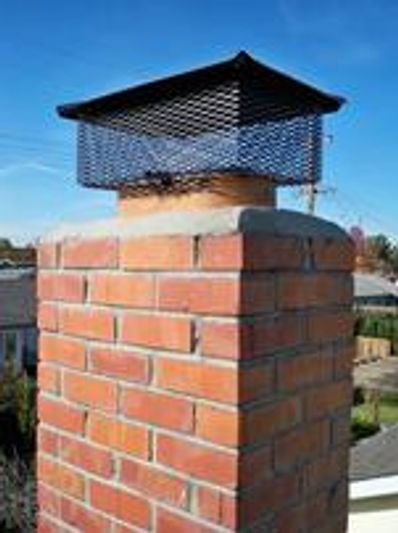Chimney Terminology
When talking to a professional in any field can be intimidating especially if you do not understand the terminology being used especially with chimney sweeps. Here at Mr. Chimney & Dryer Vents R' Us we want to make your experiences having your chimney inspected, cleaned or any other services you may require fun, educational and more importantly stress free.
Terms:
1) Chimney cap: The chimney cap is the metal mesh screen that has a lid on top of your chimney. The cap is sometimes referred to as a flue cap, chimney cap or cap for short. Some people even label it the little house on top of the chimney. The chimney cap arrestor is designed to keep critters and rain from entering your chimney and sparks from exiting out onto your roof or nearby combustibles.
2) Crown: The crown is the cement top of your chimney encasing the top flue liner. The crown prevents any water from seeping in between the brick and flue liners.
3) Flue Liners: Flue liners are 1-2ft terracotta tiles that are stacked one on top of the other creating the flue. Flue tiles come in many shapes (oval, round, square and rectangle) and many sizes (8"x13,"8"x17", 13"x13", 13"x17" and many more). Flue liners have mortar joints to hold them together and prevent any creosote from entering any crevasses.
4) The Flue: The flue is where the smoke travels up to exit your chimney.
5) Smoke Chamber: The smoke chamber is the open area located at the bottom of the last flue liner and the top of your fire box. The smoke chamber is a place for the smoke to accumulate and force its way up the flue instead of your living room.
6) Smoke Shelf: The smoke shelf is located behind the damper and is used to prevent down drafts and debris from falling into your fire box.
7 Damper: The damper is a flat rectangular blade that operated by a handle to open and close. The damper is most often referred to as The Flue which is an incorrect term. The damper opens and close access to the flue. When you are having a fire your damper must be open. When your fireplace is not in use you may close your damper in order to prevent cold air from coming in or hot air from escaping.
8) Throat Plate: The throat plate is an iron plate opposite of the damper. The throat plate is angled in order for smoke to ramp up into the smoke chamber. The throat plate has fiberglass insulation behind it and acts as a shield preventing creosote from building up and catching fire to the woodwork in your walls.
9) Firebox: The firebox is another term for your fireplace. The firebox is exactly what it says. The firebox is made of a yellow colored brick known as a fire brick. Firebrick are put together with a mixture of mortar and fire clay to make it more heat resistant.
10) Lintel: The lintel is the iron bar that holds up the top of your firebox opening
11) Hearth: The hearth is the front of your fireplace that is made from brick, tile, sandstone etc. The hearth is designed to prevent your wall from catching fire. A proper hearth facing must have the minimum distance from a combustible: Top:12", Side 8" and Floor 16". No combustible (something that can catch on fire) may come any closer than those minimum distances.
12) Ash Dump Door: The ash dump door is a little 4"x8" door located on the floor of your fireplace that is used to dump white ash. Not all chimneys are built with one.
13) Ash Pit: The ash pit is the area where the ash is deposited from the ash dump door. The ash pit is usually a three cubic foot box.
14 Ash Pit Door: The ash pit door is a door located on the outside lower section of your chimney that gives you access to the ash pit in order to shovel out white ash that is stored there.
15) The Neck: The neck is the skinny part of the chimney that encases the flue liners.
16) The Shoulder: The should is where the neck (the skinny part) meets the Lower section (the fat part).
17) The Lower Section: The lower section of your chimney houses the firebox and smoke chamber area. The lower section is sometimes informally referred to as the butt.
18) Flashing: The Flashing is stainless steel sheets that are wrapped around the area of your chimney where it meets the roof prevent any water from entering your house.
19) Roof Saddle: The roof saddle is a stainless steel section that diverts water that drips down from your roof from entering the area where the chimney meets the house.

